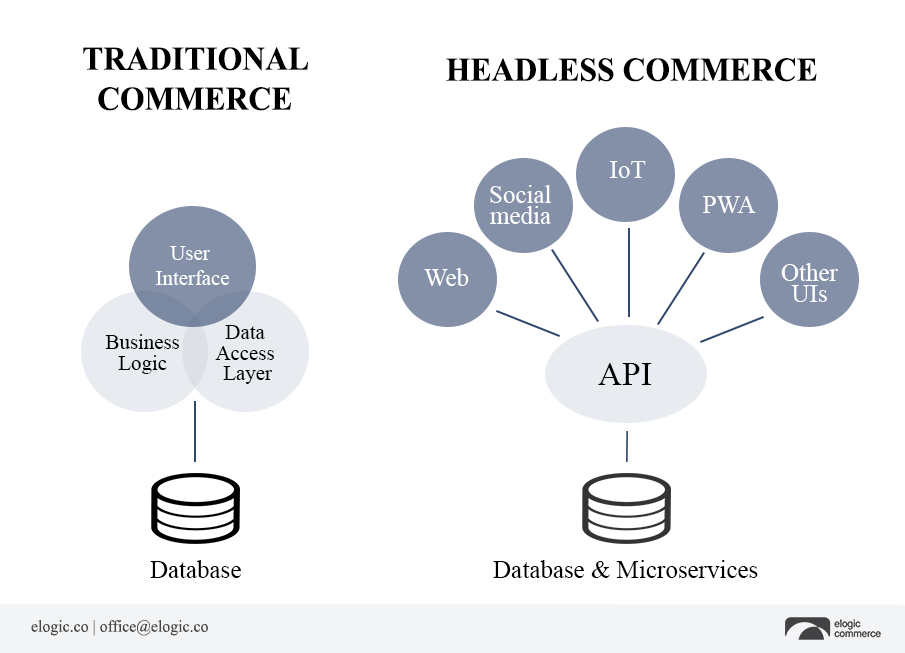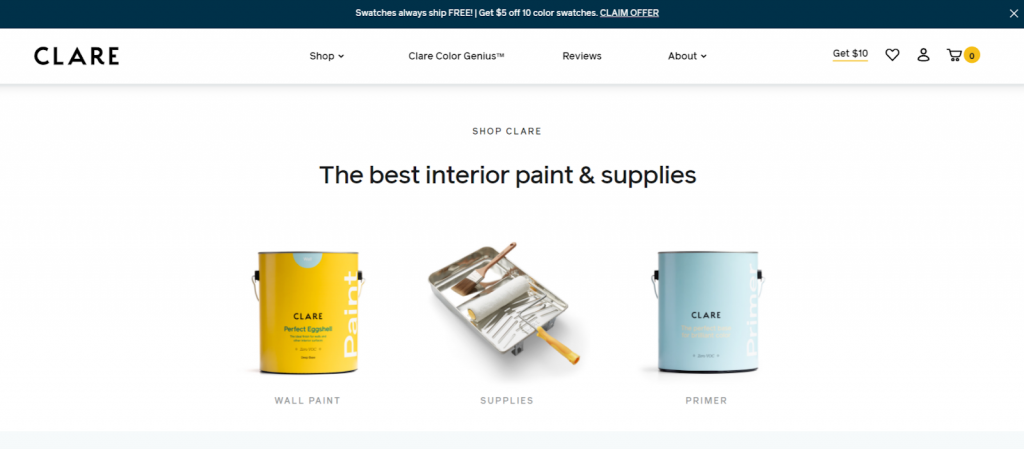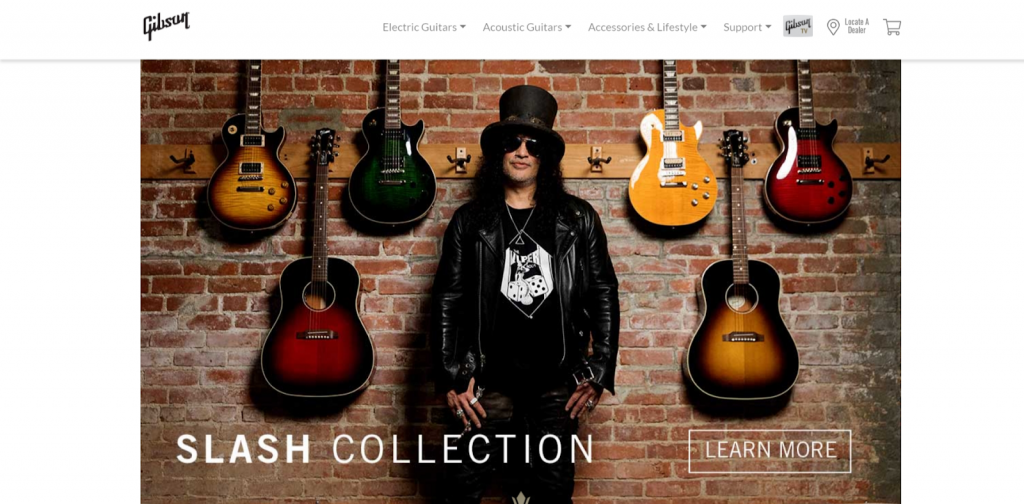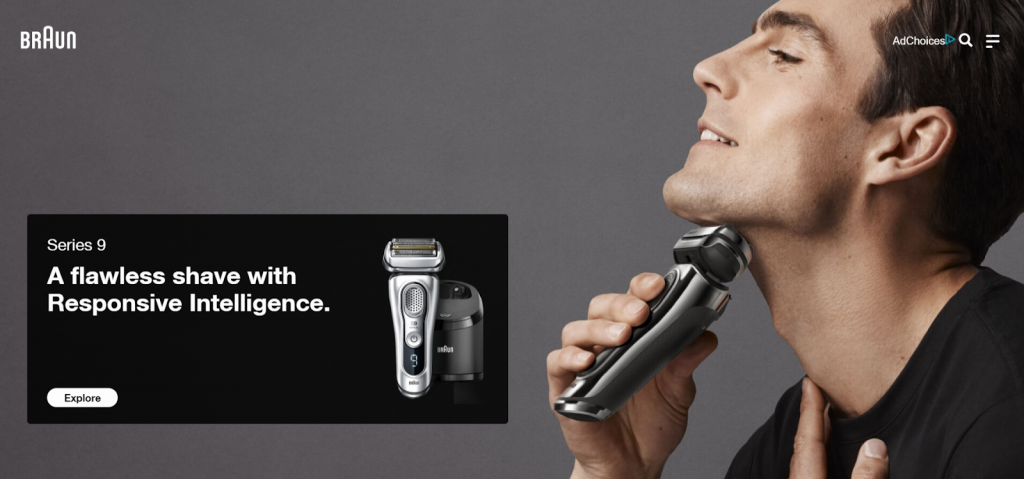Ecommerce is both a blessing and a curse for retail. Despite many advantages of ecommerce, the industry has become so competitive and the businesses with legacy tech stack so costly to maintain that the merchants are unable to keep control of their data, analytics, and user experience.
Frankly speaking, retailers start losing their heads, while it’s their ecommerce platform that should do it. Literally.
Headless ecommerce platforms are not a new technology around but have become a buzzword ever since retail giants like Walmart, The Hope Depot, Macy’s implemented it. It’s thanks to headless ecommerce that companies can quickly adjust to disruptive market changes, introducing new products and services to compensate for the lost revenues.
What are some best headless ecommerce platforms and how will they help you stand (and even beat!) the competition in a fast-changing environment — read more in this article.
What Are Headless Ecommerce Solutions?
Basically, headless ecommerce is where the front-end and the back-end of your website are decoupled. They stand independently from one another, separating the content presentation layer (what your customer sees) and the business logic (what you and your ecommerce team see).

A headless ecommerce platform is a technology that exposes all functionality and data through individual APIs, ideally operating on top of a microservice. As Brett McLaughlin, the CTO at sticky.io, explains,
These APIs give merchants the ability to use a platform however they wish — from running credit cards to processing payments to sending an email. This flexibility removes the limitations of a pre-configured set of actions and puts the real power back into the merchants’ hands.
Thanks to headless ecommerce software with its API-first approach, merchants can introduce new customer touchpoints (mobile apps, marketplaces, localized websites, etc.) without actually rebuilding their ecommerce website.
Why Do Retailers Need Headless Ecommerce?
Headless ecommerce software provides great flexibility in creating and distributing content, interacting with the corporate software, and communicating with the user.
Read more: What’s the Difference Between eCommerce and mCommerce?
Benefit #1: Boosted CX Across Touchpoints
Headless commerce was born with the idea of perfected CX in the first place. Each module in the presentation layer is isolated, so you can modify them, integrate third-party systems, and align them with the customer needs, ensuring personalized UX.
You can unify shoppers’ checkout experiences and history across all shopping channels. Or add social login to your website. Or revamp your web interface to fit the size of your users’ devices. Whatever the change, you can be sure your website won’t experience any downtimes.

Benefit #2: Agile Marketing
Imagine you run a clothing store, and one of your warehouses gets flooded during heavy rainfall. A part of your stock gets wet, and you decide to launch a flash sale to save the day. With a monolithic system, you’d have to spend a few weeks to create a webpage announcing your sale. With headless, on the other hand, you can prepare and launch a campaign in a matter of minutes. On top of that, you can leverage your existing customer data and share the hot promotion in personalized emails.
Benefit #3: Effective Omnichannel Strategy
Headless will allow you to meet your customers across various touchpoints. Well, duh! After all, you’ve got the possibility to create multiple storefronts. So it becomes easier to implement the lifecycle ecommerce marketing model; for instance, you can take the following steps:
→ reach out to your potential customer with a PPC campaign;
→ redirect them to a product page on a website;
→ convince them to make a purchase via a LiveChat;
→ nurture relationships with your customer on their mobile devices;
→ turn them into brand advocates with a personalized loyalty program.
Benefit #4: Unlimited Scalability
In monolithic store architecture, scaling means slowing down your website a zillion times. With headless, the front-end and the back-end can be scaled individually. So if the presentation layer receives much traffic, the back-end is not affected because they are only loosely coupled. That means no downtimes during heavy sales seasons and lower operational costs on server providers.
Benefit #5: Extra Security and Fewer Outages
Is headless commerce secure? You bet! First, because the front-end and the back-end are decoupled, data breaches or cyberattacks never bring down the whole system. The system is much easier to monitor and control, and you can fix all security-related issues in the background while your store is up and running.
Second, APIs act as an application and security layer. So you don’t have to wait for security patches and upgrades as in the case of SaaS platforms. Thanks to APIs, you can roll them out on your own (or with the help of an ecommerce development company).
Who Will Benefit the Most From Headless Ecommerce Platform?
One thing is for sure – the headless approach is pretty good for businesses with big scaling potential. As the project develops, owners face the need to expand web functionality to improve customer service, fulfill more orders, or introduce new payment methods. That’s where headless ecommerce solutions come into play.
You’ll definitely benefit from headless ecommerce software if:
- You need an omnichannel business strategy. Do you sell via multiple channels? Are your company’s products available overseas? Headless ecommerce architecture will allow you to structure all available content and product information together, providing customers with quick access to the channels they use for online shopping.
- You already have a CMS but seek more flexibility. You can add a RESTful API for the efficient distribution of content through any channel available.
- You want to improve your customer service. Traditional SaaS solutions do not always meet the consumers’ needs. Using the headless ecommerce platform, you can experiment with personalization, power your website with AI, or analyze the strategies that drive the most conversions. This way, you will reduce your customer acquisition costs by increasing the flow of organic traffic to your sales channels.
Headless will also work best for those who wish to establish a mobile presence in retail. A PWA deserves particular attention here. As a hybrid of a website and a mobile app, the PWA can serve as an additional, cost-effective front-end layer for online shoppers. On a desktop browser, a PWA looks like a regular website; but when opened in a mobile browser, it becomes a hybrid app. Users can enable push notifications, interact with a brand on their mobile devices, and install a dedicated app on their home screen.

Some of the best headless ecommerce websites have implemented PWAs. Just take a look at Starbucks! The PWA ended up being 233KB, 99.84% smaller than the 148MB size of the iOS mobile app. It also boosted customer conversion rates by 20%, user time spent on the site by 87%, and the number of daily and monthly site visits 2x.
Comparison: Headless Ecommerce vs Traditional Ecommerce
Who should consider the best headless ecommerce platforms as an alternative to traditional ecommerce frameworks? Companies that are forced to regularly edit, supplement, and replace outdated systems spending thousands of dollars and man-hours in the process.
The main difference between the two concepts is this:
Traditional ecommerce is definitely simpler to set up – get a platform, pick a theme, and fill it up with products and content. The main difficulty here lies in tying all the customized functional parts together (in some platforms, it just takes some extra time, while in others, a programmer’s input is required).
Alternatively, when it comes to headless ecommerce architecture, as you already know, the entire frontend is built from scratch. This takes more time and configuration efforts. However, as a result, you get much more customization space and small tweaking flexibility. The great thing about this is that headless ecommerce functionality can be tailored to specific devices and user needs.

All in all, headless is probably your cup of tea if you’re looking to provide something truly authentic in and out. Sure, you can customize a readymade template as well, but wouldn’t it be more rational to build something unique from the get-go?
Types of Headless Ecommerce Architectures
As the front-end and back-end are separated in headless ecommerce, they are edited and updated in isolation from each other.
Headless ecommerce architecture allows you to store brand product information in the backend and use APIs to move it across different platforms: store website, PWA, Amazon, smartwatch, and other sales or marketing channels.

Types of headless commerce architectures include:
- Pure headless commerce architecture. It includes a working backend, but there is no frontend in the technology. This approach provides maximum flexibility – interface designers can tweak and customize the frontend however they see fit. However, creating such interfaces from scratch can be costly and time-consuming, which will delay the release date.

- Pre-built headless ecommerce architecture and APIs. This is a readymade version with a backend and already developed APIs, often with interface templates. This type allows for faster time to market using an omnichannel approach since the API has already been created. At the same time, turnkey solutions with a full range of services involve additional costs (depending on the choice of provider and other factors).

12 Headless Ecommerce Examples
Let’s review real-life examples of headless ecommerce. Below, we gathered 12 great websites that chose to employ the headless approach.
- Clare — Shopify Plus + Contentful
A commercial website dedicated to paint shopping that does a great job at grabbing the users’ attention with the light, unobtrusive interface.

- Kinsley Armelle — Shopify Plus + Contentful
An online store of original handmade jewelry that has just the necessary functionality and warm visual design.

- Grassroots Coop — Shopify Plus + Contentful
An online provider of high-quality meats that preferred to stick to the familiar minimalistic design approach.

- Verishop — Shopify Plus + Contentful
This one is a marketplace site and app helping various brands distribute lots of different clothes, accessories, and miscellaneous items.

- Gibson — BigCommerce + custom front-end
The brand standing behind the legendary Gibson guitars also has a headless ecommerce website where new and vintage beauties shine in all their glory.

- Oliver Bonas — Magento + Angular.js front-end
A British lifestyle store that has an ecommerce outlet holding thousands of items for sale within a light, simple interface.

- Big Green Egg — Magento + custom JS front-end
An exclusive take on a garden charcoal grill that came out as a successful startup – here’s a great example of how a single original product can take up a whole website.

- Collégien — Magento + API-First Back-end, PWA
A brand store of various footwear that offers a PWA functionality for purchasing a wide range of products.

- Lancôme — PWA.
An ecommerce of the renowned cologne brand. After the website rebranding and transformation into a PWA, conversion rates went up by 17%.

- Net-a-Porter — Google Polymer
An ecommerce store providing thousands of items from tons of renowned brands that’s used by as many shoppers on a regular basis.

- Braun — GatsbyJS + Contentful
You’ve seen the ads, and the ecommerce solution Braun does an equally good job at visually translating the unique benefits of popular trimmers and epilators.

- Yoga Girl — Shopify + Contentful
This is a movement of yoga lovers. The Yoga Girl website includes practice videos, community discussions as well as a shop of online retreats, food, merch, and more.

Top Headless Ecommerce Platforms
The best way to evaluate an ecommerce platform is to understand its advantages and limitations, as well as assess the possible costs associated with adapting or completely replacing the platform.
We’ve put together a list of the best headless ecommerce solution providers to help you boost business with a high-performance solution.
Magento
Magento isn’t an exclusively headless platform, but its open-source API-first nature makes it a good fit for the best headless ecommerce approach. The main advantage of Magento is that it allows both developers and the merchant for agility on the front-end and much faster load times.
As a rule, Magento powers back-end operations and can be coupled with the following presentation layers:
- PWA — Adobe actually promotes its use itself, and only Magento merchants can access a dedicated PWA Studio to build a hybrid app alone.
- Adobe Experience Manager (AEM) — the solution combines a content management system (CMS) and digital asset management (DAM). AEM connects to Adobe Creative Cloud, making it particularly easy to publish and distribute content, as well as provide a personalized user experience.
- Cross-channel — a merchant can build a custom front-end to leverage new disruptive technology, like IoT, AI/ML, and other digital touchpoints.
- Third-party integration with other headless CMS or front-end platforms, like Drupal or Contentful.
Keep in mind that not every Magento feature, like page builder or content staging, has API extensibility out of the box. In such cases, a merchant may need to hire a Magento developer to overcome the platforms limitations.
BigCommerce
Being a SaaS platform, BigCommerce is still fit for headless ecommerce endeavors for small businesses. Specifically, headless approach can help turn quite a few BigCommerce limitations into strengths. Here are the improvements you’ll get after de-coupling BigCommerce front-end and back-end:
- Interactive interface and unique branding — the selection of BigCommerce templates is quite thin and every additional feature on the presentation layer requires a plug-in. All these issues can vanish into thin air if you connect a feature-rich CMS or DXP on the fron-end.
- Improved A/B testing — with traditional BigCommerce setup, there’s always a risk you’ll tweak some setting to see analytics and break the whole website. With headless BigCommerce, you can run as many tests as you need to increase conversions without hassle.
- Agile content management — you can plug in any CMS you like, like Contentful or WordPress, and make content changes quick and easy.
The biggest problem you might have with headless BigCommerce is development. Because the platform’s core system is closed, you’ll need to hire a BigCommerce developer to set up and configure your store.
Shopify
Shopify is one of the best headless ecommerce platforms with the ability to integrate ERP, PIM, CRM, CMS, and design systems. It preserves all the advantages of BigCommerce headless but adds a GraphQL API for developers to easily connect third-party software.
More advantages of headless Shopify:
- User-friendly analytics with pixel settings for tracking ecommerce metrics and cross-channel sales.
- Extensive SEO features out-of-the-box that render Shopify one of the best ecommerce platform for SEO.
- Easy adoption of PWA and improved store performance with a decoupled front-end.
Like any other ecommerce platform, Shopify isn’t perfect either. If something goes wrong during the setup and configuration of headless Shopify, you’ll be your own support. You can also lose some native functionality, like theme customizer and rich text editor. To save yourself the trouble, you’d better partner up with an ecommerce development agency for maintenance and support services.
commercetools
commercetools is a brand new disruptive technology on the market. Thanks to the microservice architecture, it’s considered one of the best headless ecommerce software these days. Some of the platform’s benefits include:
- 100% cloud native capabilities — unlimited scalability and accessibility ensures a merchant will easily manage the store from any device and no matter the traffic spikes.
- High availability — commercetools Service Level Agreement (SLA) guarantees zero downtime deployment and server functionality in at least 99.8% of the time.
- MACH architecture — thanks to microservices, you can add any third-party software and additional storefronts without breaking the core system of your store.
Still, only digitally mature companies can fully leverage the commercetools potential. Ideally, you should have an in-house development team or a reliable ecommerce development partner to customize the solution and maintain it on an ongoing basis.
Elogic keeps up with new ecommerce trends and has developed expertise in commercetools too.
Get your project estimation in a few business days.
Request a quoteDrupal
Unlike the aforementioned platforms, Drupal is the leading enterprise CMS solution and will work best on the front-end. It is the preferred choice for government agencies and content-heavy websites, like The Tonight Show with Jimmy Fallon or The White House. Among numerous advantages as a headless ecommerce platform, Drupal offers:
- Fast & flexible content delivery — make quick changes to the content while keeping your storefront interactive.
- A high level of security — system admins can easily limit access to certain areas of website infrastructure. As a result, content is created and published in one system and delivered to readers through another.
Mind that, just like with Shopify headless, you may lose some of Drupal’s native functionalities, like layout and display management, content previews, UI localization, etc. You’ll also need to allocate some budget on ecommerce development services. Drupal is an open-source system based on PHP, so you’ll need tech expertise to set up your store.
Shogun
Shogun is another option for the presentation layer in headless ecommerce. It integrates with top ecommerce platforms including Shopify, BigCommerce, and Magento, making it easy to create custom pages for your online store. Some advantages of Shogun include:
- Drag-and-drop interface — a merchant can create new webpages through a low-code interface.
- PWA-first approach — all Shogun front-end layers are based on PWA which optimizes page load speed no matter rich media or high traffic load.
- Online commerce metrics analysis — from form submissions to cart conversions.
Shogun is an excellent choice for non-techy merchants heading a small business. Many experts say it couples well with Shopify enhancing its page builder functionalities. If this case scenario seems right for you, go with Shogun. If you’re feeling more ambitious to scale and digitally transform your business, other headless ecommerce platforms might be a better fit.
Elogic Team’s Recommendation
In a nutshell, headless commerce stands for a decoupled approach to a store, whereby the front-end and the back-end website layers are connected via APIs. Think of headless architecture as a LEGO puzzle: you get to add any building block – be it a new storefront or a third-party system – to improve CX and your commerce operation efficiency.
Mind though that headless isn’t for everyone. Customer experience is central to a headless commerce strategy. Your business should reach a certain level of digital maturity to implement the approach.
If you’re ready to invest in a headless setup and compete with the business sharks in the market, go with the experience-led model and try CMS, DXP, and PWA for your headless storefronts.
Don't let monolythic ecommerce ruin your chance for success
Go headless with Elogic

